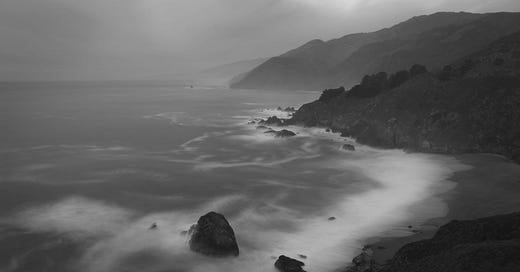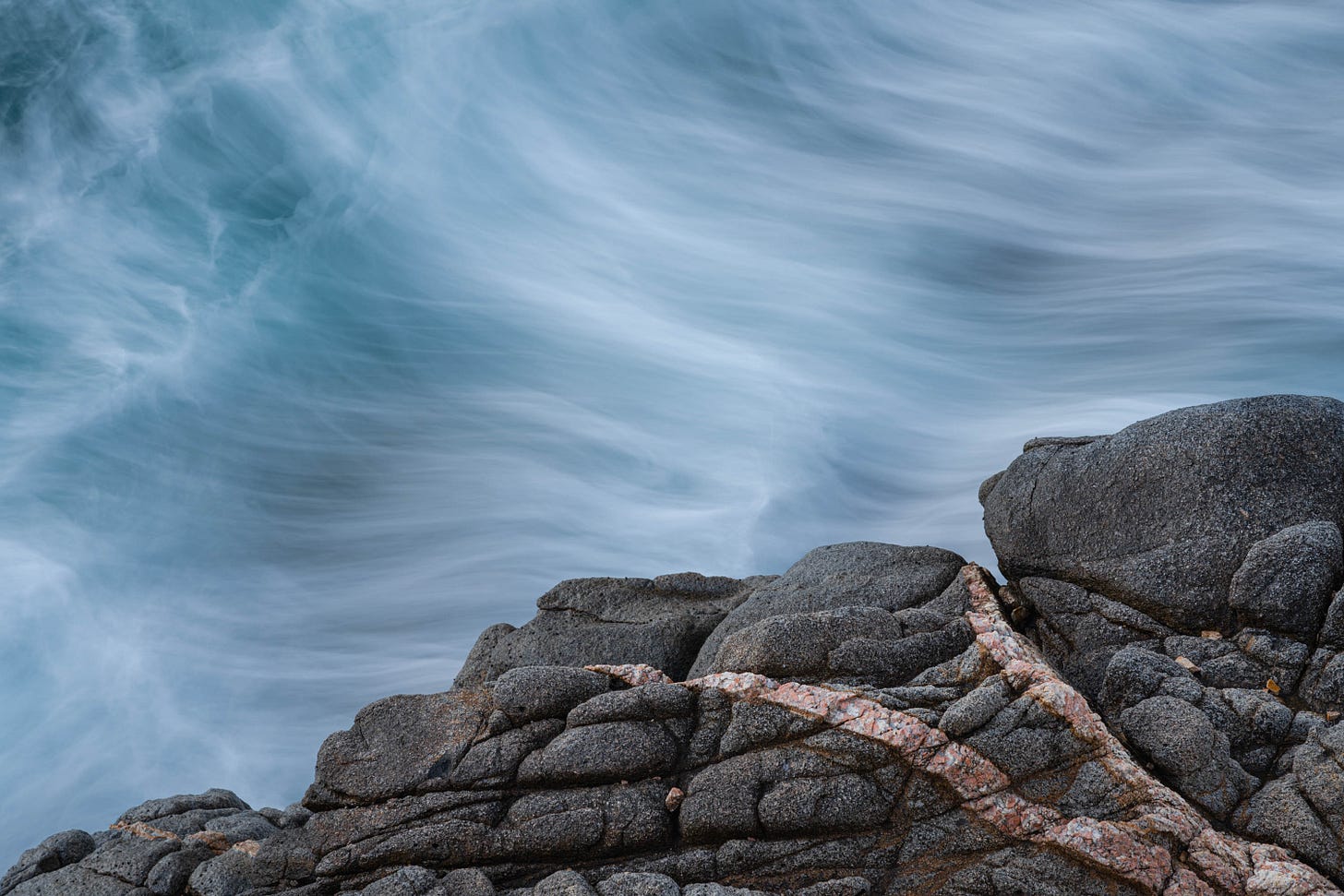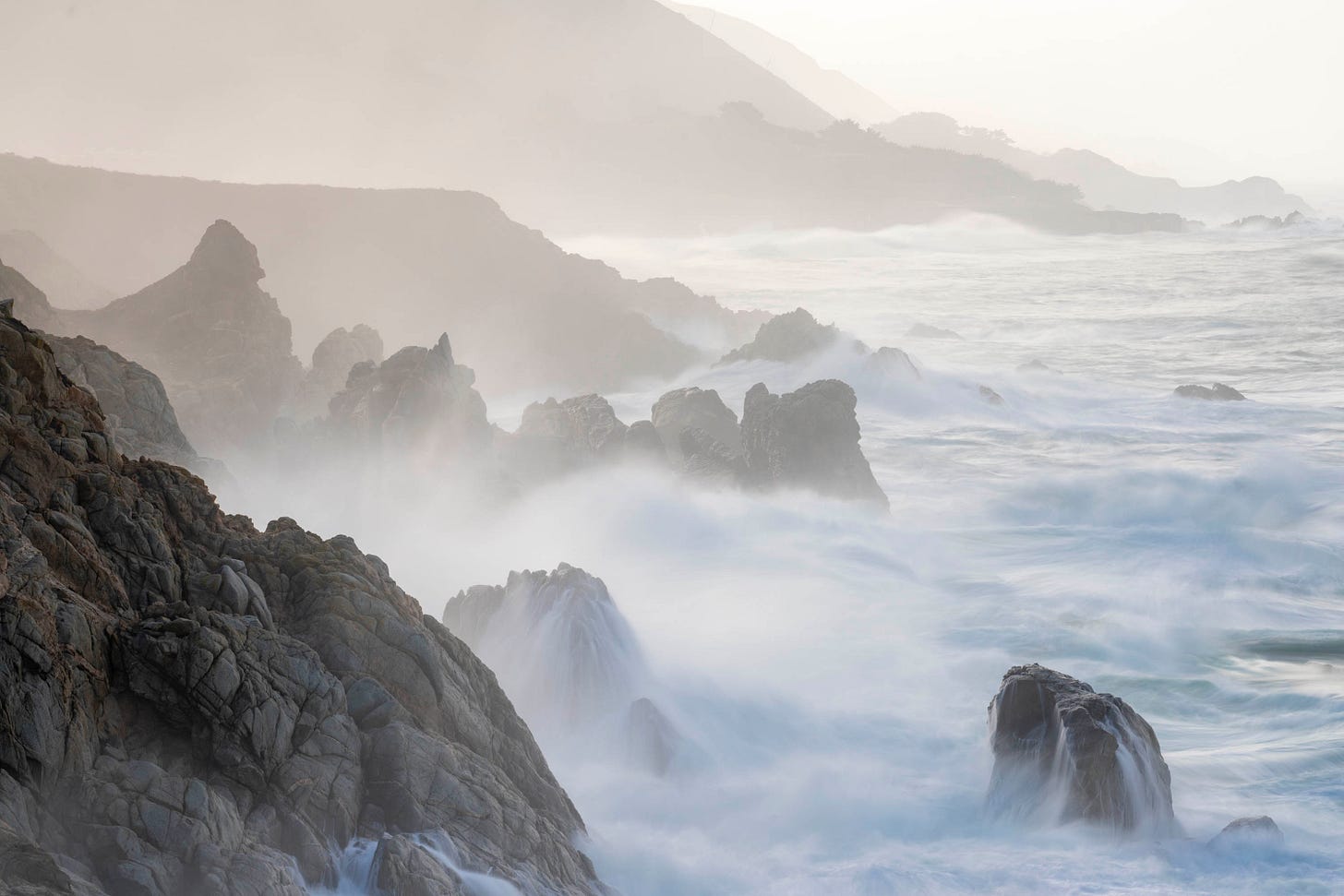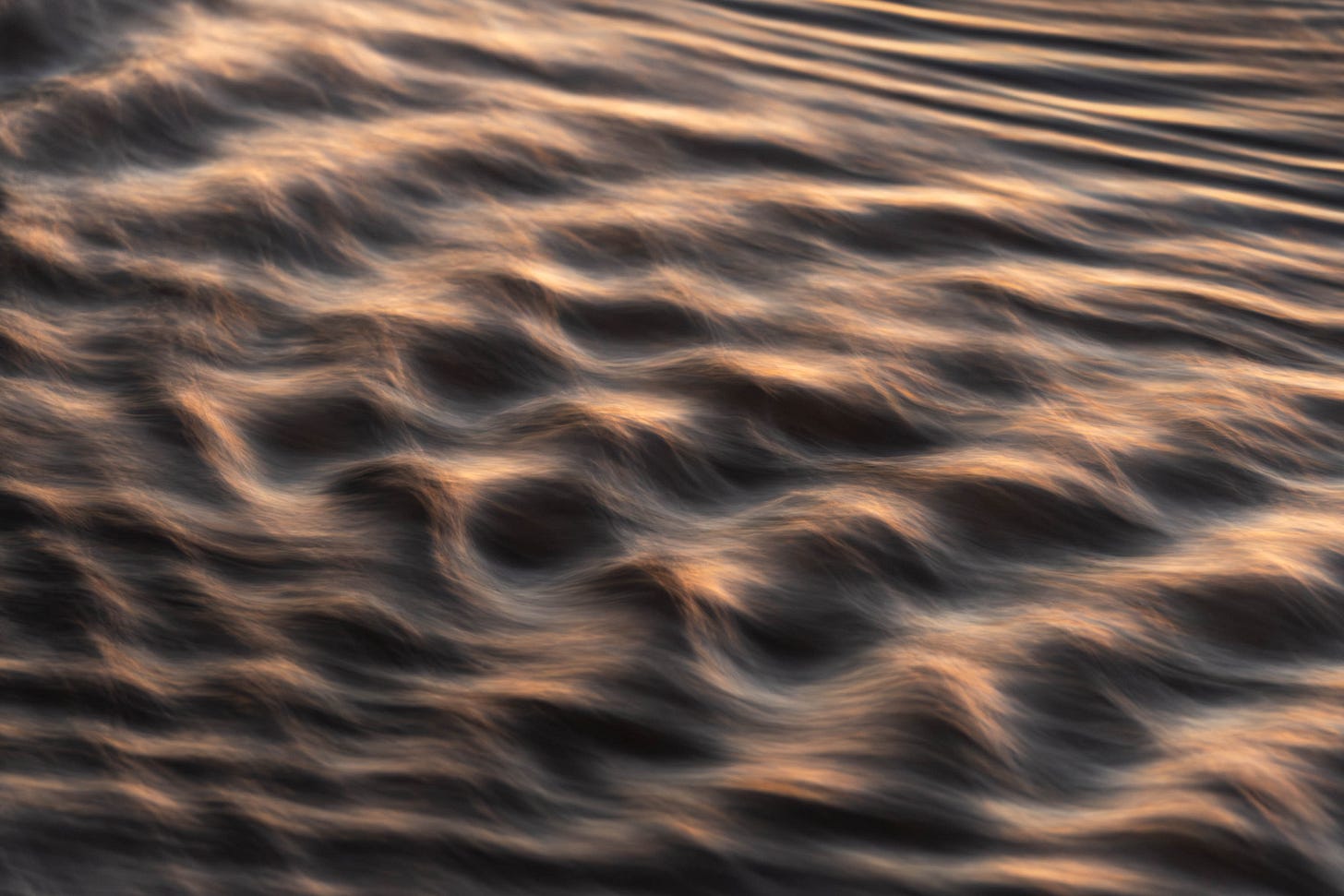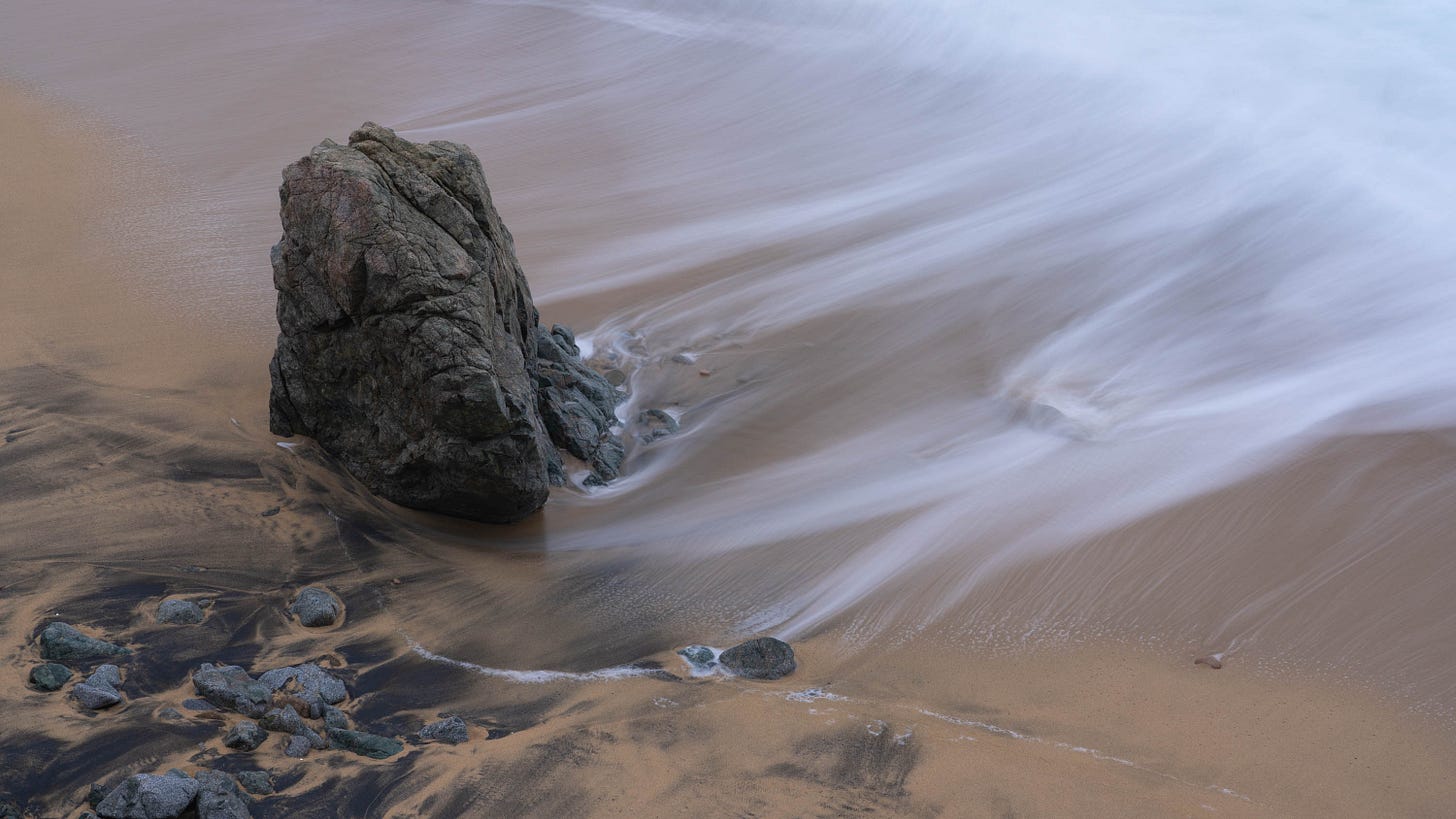Along the Central coastline of California which we call Big Sur many dramas of the natural world unfold. A now iconic landscape with sweeping vistas, mountains that descend to ocean tides, waterfalls that drop directly into the Pacific Ocean, river mouths, beaches, cliffs, coastal prairie, chaparral, redwoods, oaks, sycamores, all make for vibrant and diverse ecological life that invites participation and exploration.
Many people from all over the world fly to California to drive the coast road through Big Sur for good reason. It’s beautiful and accessible. Due to the advertising campaigns by the tourism boards, there are a few icons that attract much attention in Big Sur leaving much of the coast lightly explored. Bixby Bridge, Pfeiffer Beach, McWay Falls, are perhaps the most heavily visited.
These are nice spots to be sure. But there are many more stories to be found and to be written.
The coastline and mountains of Big Sur contain worlds within worlds. Big Sur is a microcosm filled with microcosms. Each stretch of the coast is a world unto itself, yet beautifully connected to the whole.
One such example is Garrapata State Park.
If you were to only visit Garrapata State Park and explore the more than 30 pull-outs along Highway 1, you would get a good sense of Coastal Big Sur.
The coastal bluffs stand above the sea, weathered and ancient, jagged edges softened by a continuum of wildflowers and coastal scrub. Riparian landscapes flourish within Soberanes Canyon, the growth of stout ancient redwoods capped by ocean spray, understory of thick fern along the creek. The path through the redwoods is cool and dark, the scent of damp earth, redwoods and sage and wildflowers, a world apart from the open grasslands above. In summer, fog rolls in thick and fast, swallowing the landscape whole, the sound of waves mark the presence of the sea.
There are waterfalls, beaches, rock stacks, cliffs, surf, mountains that rise from the coastline, expansive tide pools, and wildlife in the sea and on the land all beautifully available to explore in Garrapata State Park.
Getting beyond the most visited places allows for the microcosmic Big Sur to emerge. The entire coastline is this way. Wide vistas and intimate details, all available to witness.
Perhaps the elements I most enjoy observing and photographing is the interaction of rock and wave. The endless dance of the ocean tides and the sedimentary layers makes possible all manner of creative photography. All year long the geological and oceanic powers converge, in turn rising violently and then gently, into an oscillating rhythm that captivates and inspires.
There are times when I feel I could return to the same spot day after day to watch the waves crash. Other times, I can stand on the beach watching the sunlight play in the swash rolling up the beach.
Photography is a limited medium. The percussive sound of waves rinsing a beach of granitic rock is magic. The scent of ocean spray filling the air is enlivening. And the dynamic aspect of the elements converging over the course of one day, one season, one year makes for challenging photography.
Every technique can be used for wonderful creative effect. Experimenting with slow shutters, long shutters, handheld, tripods, filters, black and white, depth of field, I am reminded that all photography is learning to take the next photograph. No picture is perfect, but some photographs are glimpses into perfection. And those glimpses are the fuel to search for and hopefully encounter the next glimpse.
Seaside photography is a great place to practice photography. Take lots of photos. Learn all the techniques. Follow your intuition. Use boredom as a guide when to move on. Use your curiosity to discover how to apply your inner eye together with your rational mind to create.
One of the challenges I wanted to overcome was learning my camera to such a degree that it would disappear in the hand. Same with the different lenses and focal lengths.
The only way to get this done is to shoot often.
"Your first 10,000 photographs are your worst." Henri Cartier-Bresson.
Coastal environments are great for this. The number of intersections between elements is endless. It’s a great environment to learn the craft of photography, develop creative awareness in the moment, and work toward a larger vision that drives your work.
These three core elements of photography are the path forward. This is the work of photography.
Several of my own collections are from the coast:
And some photos from these collections:
Would love to hear any feedback or comments from you!

